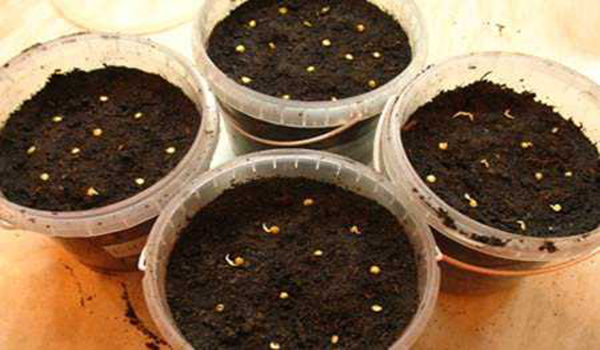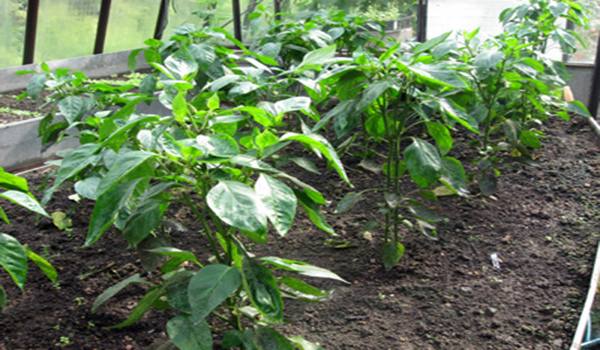Growing peppers in a greenhouse - the best varieties
Bell pepper (or as it is also called - sweet) was, is and will be a favorite vegetable crop grown in different countries. Domestic gardeners have a liking for pepper about 60 years ago. In those years it was quite problematic to get his seeds. Amateur gardeners who really wanted to grow bell peppers on their backyards - in a greenhouse or in a greenhouse - bought vegetables and extracted seeds from them, tried to germinate them and grow seedlings. As soon as the slightest opportunity arose, they bought the fruits or seeds of the sweet pepper "Gogoshary" (it was grown in Moldova) at the markets. Growing peppers in a greenhouse is the most common cultivation method for this crop, and today there are many varieties of sweet peppers on the market, which knocks the soil out from under even experienced gardeners, let alone novice gardeners.
These are "Gift of Moldova", "Pygmalion", "Winnie the Pooh", "California Miracle" and many others. For growing peppers in the open field or in a greenhouse, there are many options that differ in shape, color and appearance. How, from such a variety, to choose the right varieties of peppers for the greenhouse and for growing in the open field?
Content
Pepper varieties for greenhouses
Not all varieties are suitable for greenhouse cultivation, which should be preferred? In order for the gardener to get a high yield, it is worth giving preference to choosing the varieties "Tenderness", "Winnie the Pooh", "Nochka", "Orange Miracle" - their peculiarity is that they were specially selected for growing in greenhouses. Additionally, experts recommend purchasing high-yield varieties "Health", "Othello", "Elephant", "Victoria", but one should not forget about the orientation to the conditions of the area.
When making a purchase, it is imperative to study the growing conditions indicated on the label: ripening temperature, time, growing period, irrigation characteristics and other factors that have a direct impact on harvesting. Sowing material from abroad in local conditions may not sprout at all or not give the expected result due to the different composition of the soil and climatic characteristics.
They begin to grow peppers in March, when the first signs of heat appear. You need to prepare boxes with fertile soil for seedlings, moist compost will also work, because peppers are too sensitive to the nutrient content of the soil.
There should be at least 2 cm of free space between the seeds so that the grown seedlings do not interfere with each other. The seeds are usually sprinkled with dry compost, after which they make a mini-greenhouse in this way: the boxes are covered with glass and paper until the seeds germinate. This usually happens after 2-3 weeks if the soil is regularly moistened.
Germination requires a temperature of about 21 degrees. When the seedlings have grown, they are dived, that is, they are planted in separate pots, each plant needs a space of about 20 cm for the root system to develop normally. There must be at least 40 cm between the pots, the temperature maintained in the greenhouse is 18 degrees. We must not forget about watering and feeding.
When the plants have grown to 15 cm, their apical buds should be cut off in order to obtain lateral processes and form a bush. The more side shoots, the more fruits can be obtained from one plant. If the peppers have enough moisture and nutrients, the seedlings grow quite quickly and have large, bright green leaves.
Open ground varieties
Not every pepper has time to grow and ripen under conditions of not always successful summer, with a lack of heat and light. This requires undersized, early maturing, unpretentious varieties resistant to low temperatures. Thanks to the work of breeders, gardeners have a lot to choose from.
There are novelties with fruits of the most varied colors, from pale yellow to purple and with the familiar and familiar orange, red, burgundy, large and small, round, cuboid and cone-shaped.
At the same time, they have a compact bush, which facilitates planting care, are cold-resistant, do not require complex shelters for growing, are disease-resistant, tasty and fruitful. Here are some varieties.
- "Nafanya" is an early ripening variety. The bush grows up to 90 cm. Ripe fruits are red, wide, conical, weighing about 170 g. This variety has a fairly long flowering and fruiting, excellent fruit taste.
- "Smile" is also an early maturing tall variety. Ripe fruits are red, conical, weighing about 250 g. The yield is quite stable, the fruits are edible even in the early stages of development.
- Chardash is a very early variety. The height of the bush is 60-70 cm. Fruits when ripe are orange-red, weighing about 200 g. Fruits are very decorative, they can be eaten at any stage of development. The bush usually grows 13-17 fruits.
- "Cornet" is another early maturing high-yielding variety. Ripe fruits are brown, drooping, weighing about 200 g. This variety can be characterized by good fruit set and continuous fruiting. The fruits have a high content of vitamin C and carotene.
Growing in a greenhouse
An amateur vegetable grower can get a fairly good harvest of pepper even in an unheated greenhouse made of cellular polycarbonate. When growing peppers in a greenhouse, it is important to carefully prepare the soil in the greenhouse, the thickness of which should be at least 25 cm. Only the experience of the gardener will determine whether it is necessary or not necessary to use organic fertilizers in the greenhouse for peppers.
About 10 days before planting the seedlings in the greenhouse, they need to be hardened, gradually increasing the time the plants are in direct sunlight. Excellent seedling 60 days old - height about 30 cm, stocky, has 7-8 true leaves, budding phase. The greenhouse is usually planted with 6 plants per 1 sq. m, and if the nutritional level is low, then up to 10 plants per 1 sq. m.
If you need to get your own seeds, then you should not plant hot peppers next to sweet ones, mix them. It can be grown next to tomatoes.
There are general guidelines, tips suitable for growing most varieties and forming peppers in a greenhouse.
- There should be about 20 cm of space between the plants, because the bushes grow over time, and they will need space.
- There should be about 80 cm between the rows.
- Each bush needs to be tied up when the stem is tall enough with wooden supports.
- When the plant has risen sufficiently, only the strongest shoot is left at each branch.
- The soil is subject to constant loosening in order to provide the roots of the peppers with oxygen.
- Too dense soil will interfere with root growth, and the result is a poor harvest.
- Watering should be regular and sufficient.
- In order for the shoots to grow much faster and the fruits to sing better, the lighting in the greenhouse must be very good.
All these are rather general recommendations, since peppers of different varieties require significantly different conditions and excellent care. First of all, this applies to feeding peppers in a greenhouse: most varieties of peppers must be fed once a week with complex fertilizers. It should be borne in mind: in the first phase of growth and formation, nitrogen fertilization should prevail in the feeding, and when the bush begins to bear fruit, phosphorus fertilizers are used.
Video "How to Grow Peppers"
A video describing all the stages of growing peppers. An overview of varieties suitable for growing in a greenhouse.






